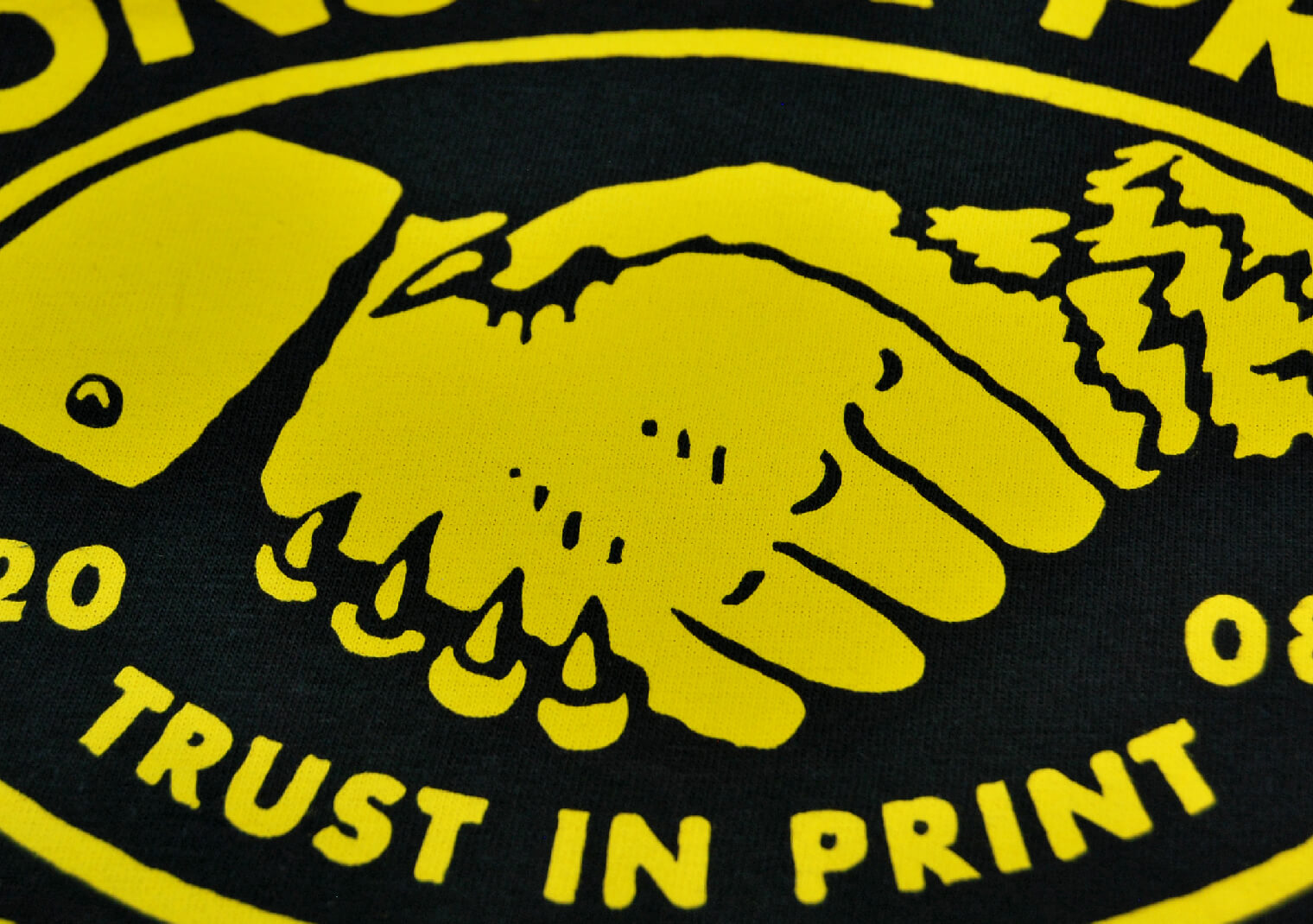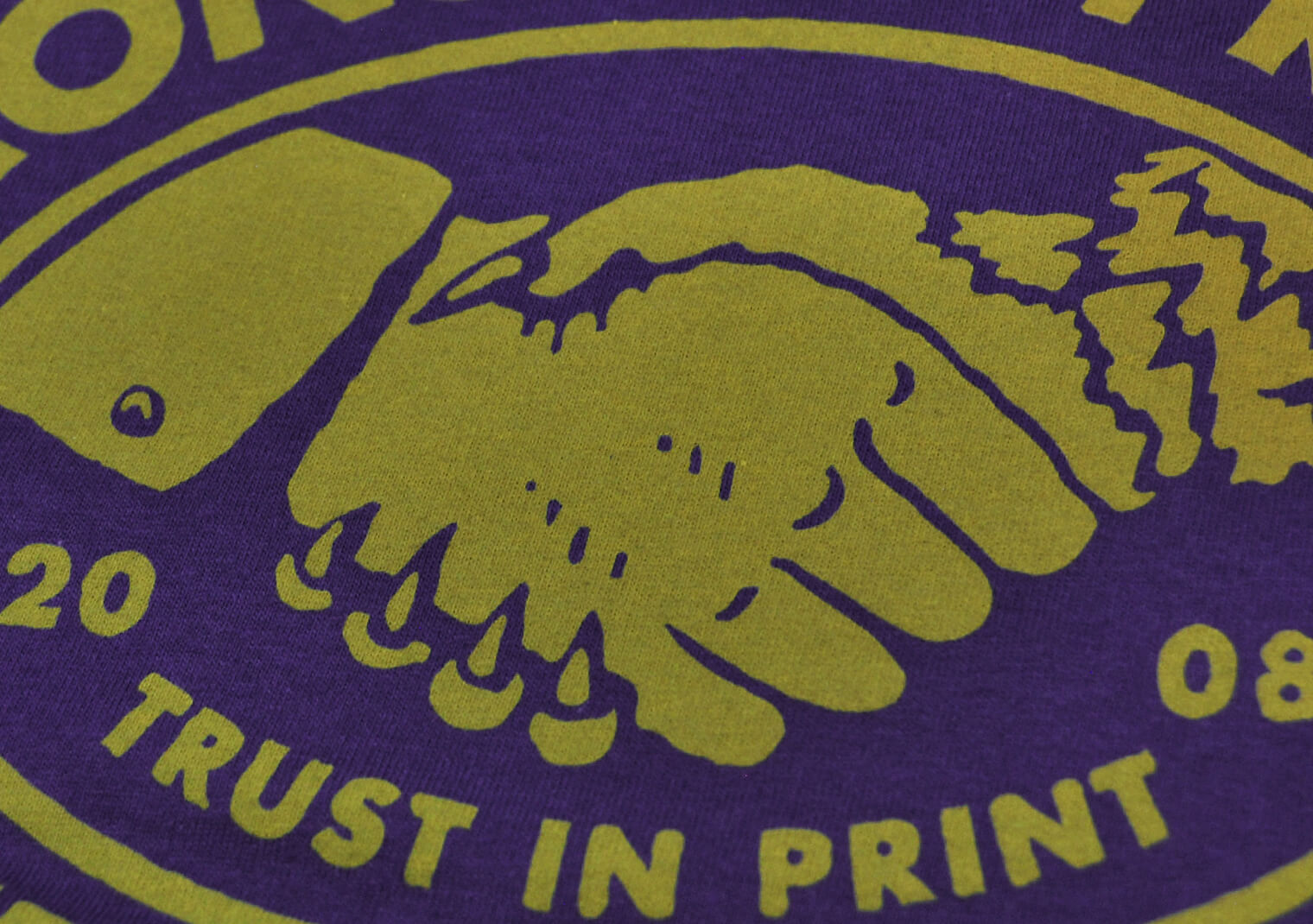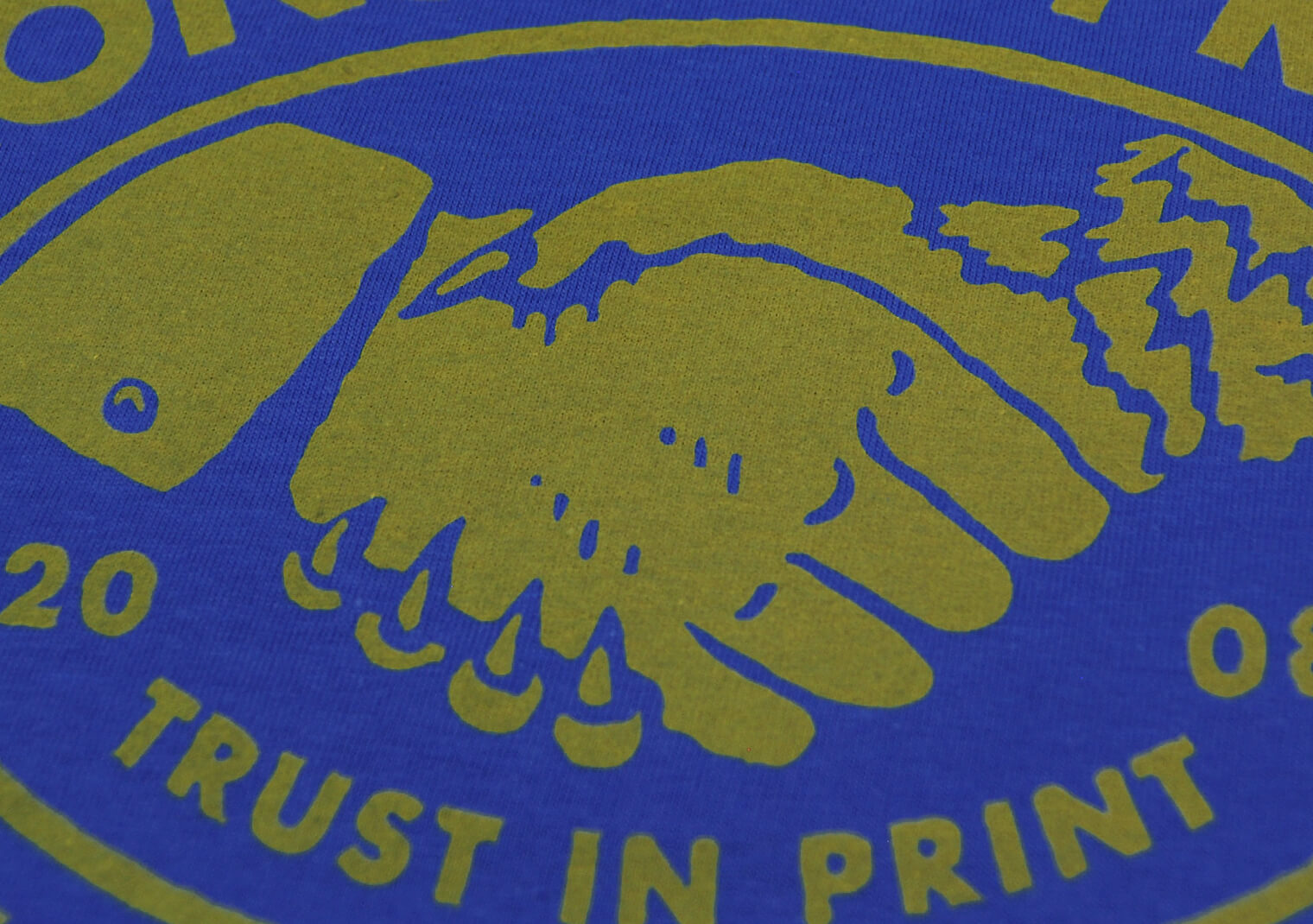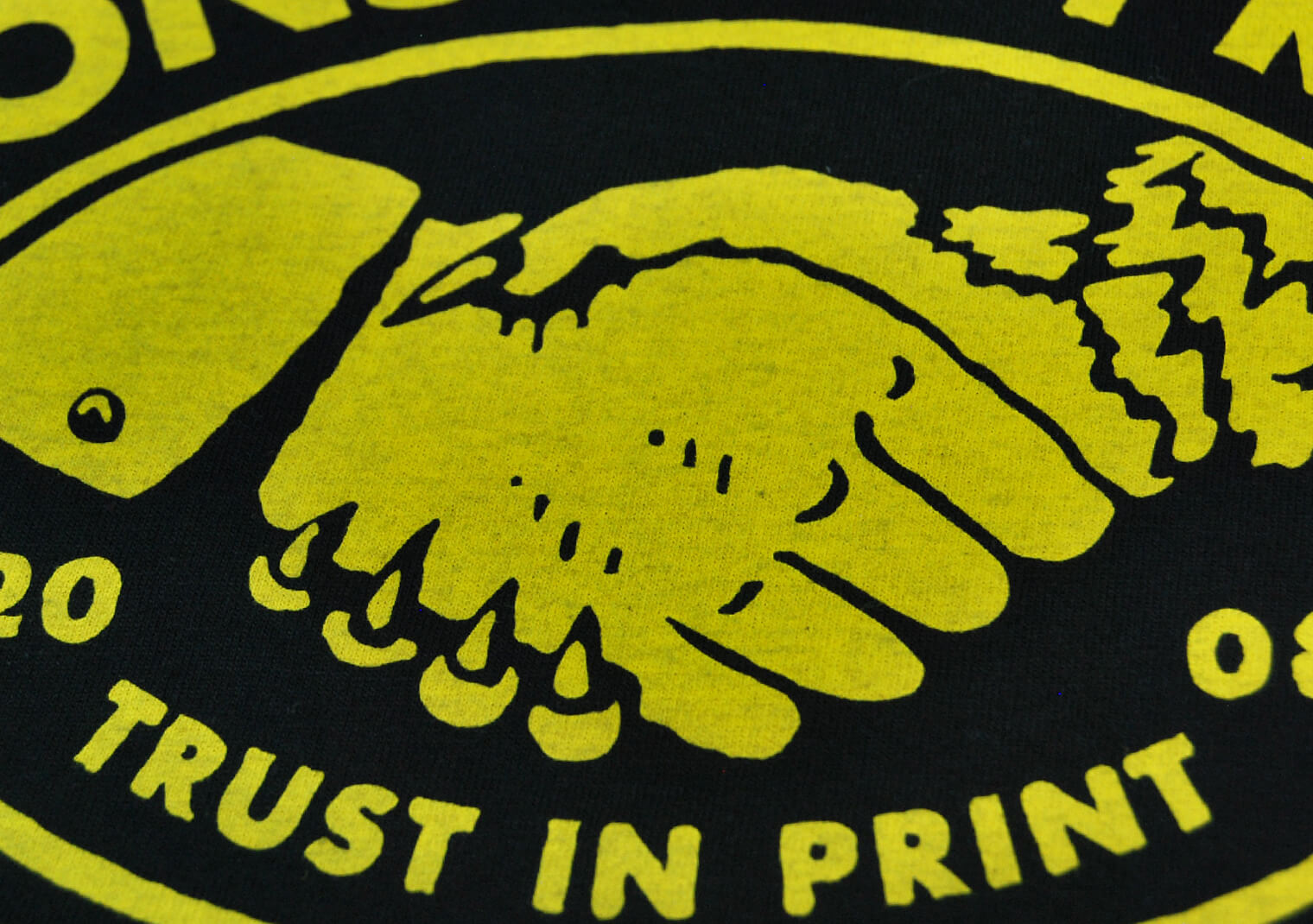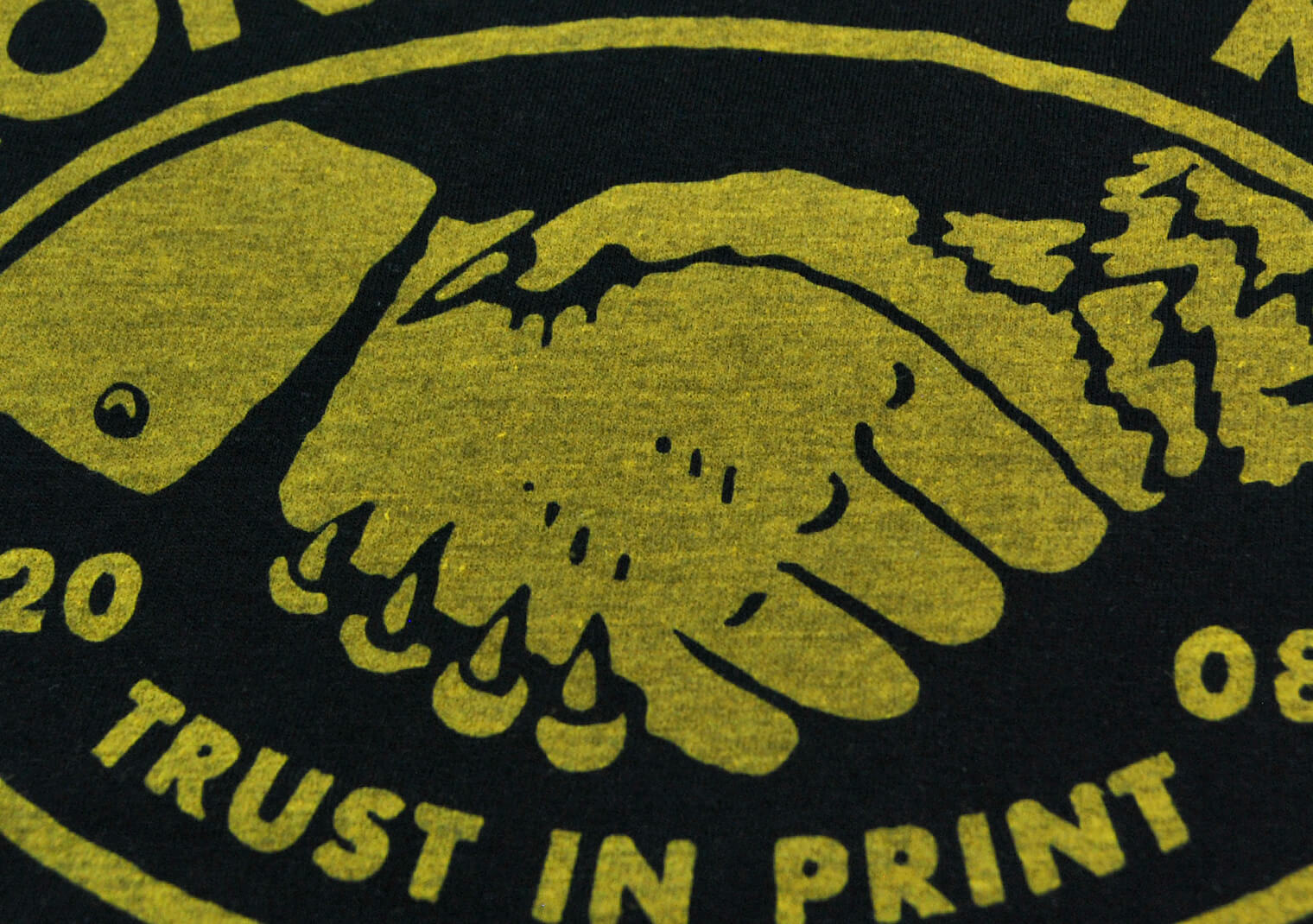WHAT IS DISCHARGE INK
Discharge ink is a waterbased ink with a discharging agent added. The discharge agent essentially “bleaches” the dye out of the shirt. The shirt is simultaneously dyed the colour of the pigment of the ink. As this method heavily relies on how well the garment reacts to the discharge agent, it isn’t without issues. We’re looking to outline some of the hurdles for you in working with discharge.
CHOOSING GARMENT COLOURS
The garment colour you select can greatly affect the results of the print. As some colours are not recommended for use with discharge ink. See examples below & read on for the do’s & don’ts of choosing your garment colour. All examples are printed with the same ink colour.
DO:
Typically less vibrant colours will react well with discharge ink. Some examples are black, charcoal grey, navy, khaki & brown.
DONT:
Vibrant garment colours will not give good results with discharge ink. Some examples are red, royal blue, purple, green, teal yellow & orange. This is down to the dye used with these colours. For example, if printing white discharge on these colours, the final result will be a lighter version of the shirt colour. So for red shirts, the result if printing white ink would be pink.
VERDICT:
A couple of suppliers have discharge rating charts, so along with that & our own tests, we should be able to advise you whether your preferred colour will work with discharge inks. So you can get a general idea, here’s a link to Gildans discharge rating chart.
GARMENT MATERIAL
The garment material you select will affect the print results. Most 100% cotton garments will discharge to some extent. See examples below & read on for the do’s & don’ts of selecting garment material. All examples are printed with the same ink colour.
DO:
Discharge typically works best on natural fibres, so we recommend 100% cotton only. We recommend a few garments that have consistently excellent results. Unfortunately, most garments, even if they’re 100% cotton, are average at best. If your design is not vibrant & you don’t mind some potential variation between garments, then we can print on garments that aren’t in our recommended list.
DONT:
Any garment containing polyester. Synthetic fibres typically to not react to discharge ink, which can leave a mottled effect in the print (some people like this).
VERDICT:
We recommend sticking to our approved garments for discharge ink for best results. If you want a mottled, vintage effect go for a poly cotton blend. If you don’t mind muting of colours / some variation, that opens up more options for you with garment selection.
NOT SUITABLE FOR KIDS / BABIES CLOTHING
Discharge ink contains formaldehyde, which evaporates during curing but may leave traces. We advise against using it on children’s or baby clothing & if you have sensitive skin, we recommend washing it before wearing.
COLOUR MATCHING
As discharge ink relies so heavily on how well a garment reacts to the discharge agent, exact Pantone matching is not possible. You’re welcome to provide Pantone colours to reference from, but some variation is deemed acceptable.
